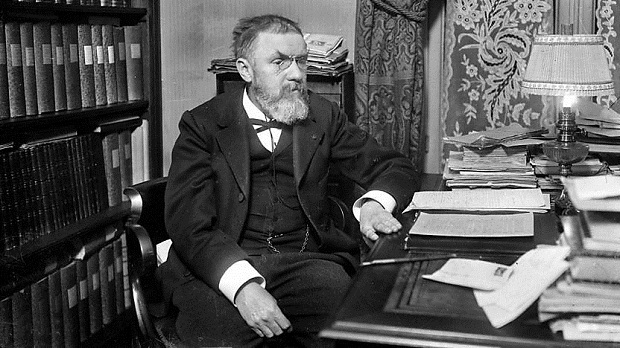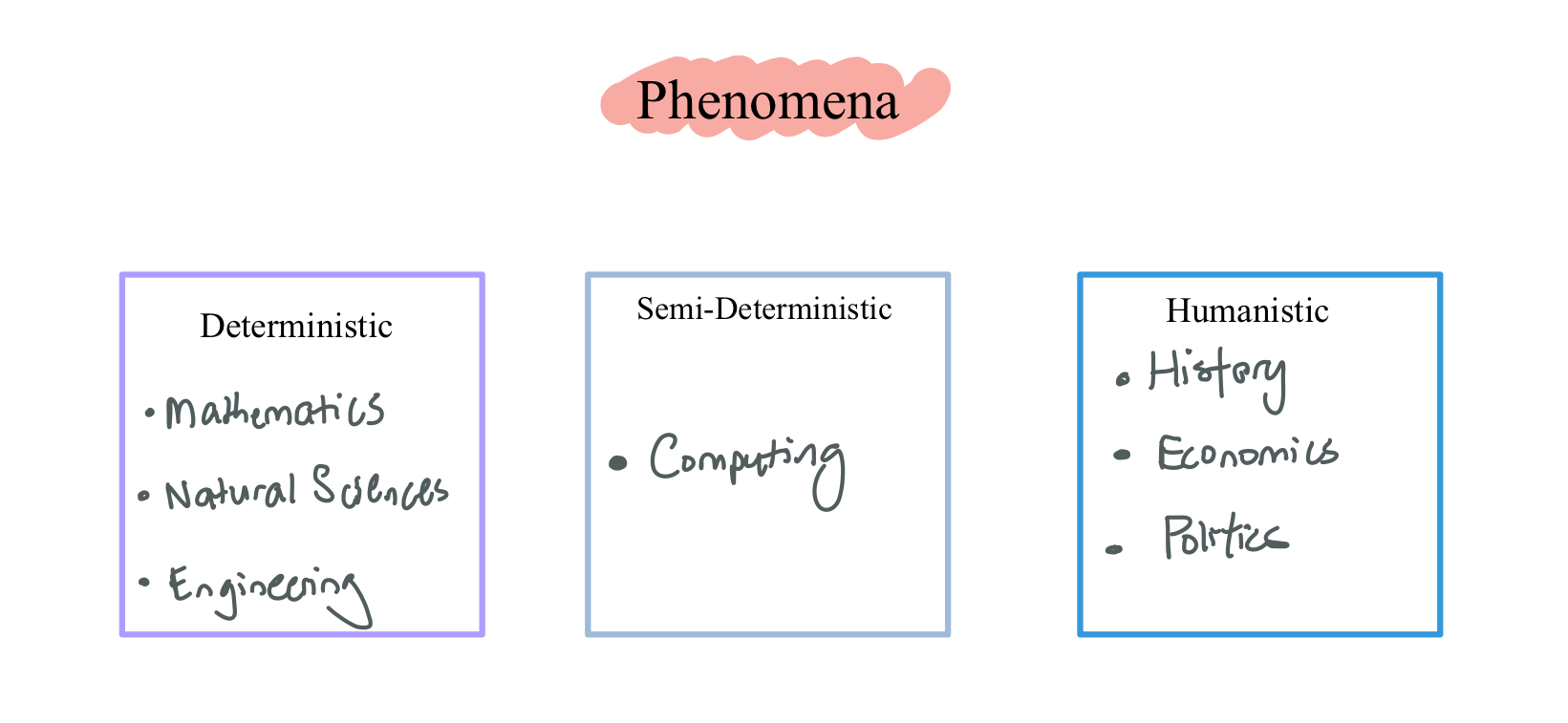Thinking About Thinking (Metacognition)
In this post, I explore the notion that we can observe experts in different fields and distill their underlying patterns of thought via the right syntax in order to adapt the “optimal style of thought” for that field (e.g natural sciences, computation, humanities).
A field is just an area of study. My idea is that understanding complexity is about linking things together, but each field has different things, and each thing has it’s own type of link. As we link things together, we can build a clearer visualisation in our head.
The Right Words
I posit how to think about these things and links can be captured by invoking the right word or syntax.
We have just seen, through an example, how important words are in Mathematics. One can hardly believe how a well-chosen word can provide economy of thought.

Thus, by observing experts in respective fields, like a scientist, mathematician, programmer, investor being interviewed, and examining their choice of words, we can capture how they think. Sounds simple enough!
Fields
I categorize fields (subjects of study) into three types: deterministic, semi-deterministic, and humanistic.

Deterministic fields are the sciences and their derived fields. Physics, mathematics, etc. These have fixed laws (of nature).
Semi-deterministic fields just refers to computing: it has fixed laws that are modifiable by humans (e.g we make the laws via telling the computer what to do via programming).
Humanistic fields refers to fields studying human behavior: economics, finance, history, politics, etc. The laws arise due to human behavior.
I argue each field can be thought of in two ways: a primal form, involving linking things together as a graph, and a dual form, which is basically visualising something in your head.
So, let’s try to find the right words to express the things and their links.
A textual representation is how the concept appears on text, or on paper. Aka how we learn. An innate representation is what we need to connect the textual representation to.
Deterministic Framework
Example Fields: Mathematics, natural sciences, engineering.
There are two fundamental things: concepts (abstraction) and physical objects (physical variable/parameter). On the underlying side, they are just numbers, quantities that can vary, basically. But what they represent are two different things. Their textual representation is a symbol and innate representation is a visual.
A concept (more towards the field of mathematics) and a variable/parameter (more towards the field of physics) are the two main players. The difference is in their treatment: both can be visualised, but the former exists in abstract space whereas the latter exists in physical space (e.g our physical reality).
The key skill: Connecting concepts together or variables together into a system.
For physical variables, we can use these measurements to visualise from a perspective. E.g put yourself in the perspective of a proton in an nucleus. Physics formalises this: aka how to simulate or think about this ‘correctly’ and ‘accurately’.
Another idea is that of dependency, whereby to understand or make connections of certain concepts, there must be a backlog graph of existing concepts that you have to build in sequential fashion, aka prerequisites.
They are linked via connections. These can be direct or latent. Direct connections are obvious. Latent ones are sudden inspirations between seemingly unrelated things. The idea is to build up a dense, well-connected network of things in your head.
So:
- Connect concepts/ideas/objects
- Connect or visualise variables
- Connect or visualise numbers
There are moments where you put something together and realize this is how the story has to go.
There is a beauty in the way things fit together in an unexpected way.
Notice their choice of words: they imply connecting things together. What about the other type of thing aka measurements?
Atoms in the coffee jiggle, which makes the cup jiggle. Heat is just jiggling spreading, which is easy to understand.
It's a mixture of partial solving of equations ... and having some sort of picture of what's happening that the equations saying.
Feynman is imagining a measurement (the jiggling) and showing how that interacts with another measurement (another bunch of atoms jiggling).
Key prompts - “Connections”, “Visualisation”
Semideterministic Framework
For semi-deterministic fields, which is essentially computing, I believe it is about breaking down a system into its parts from a top-down fashion or build complex systems from simple parts in a recursive fashion.
The idea is input and output. So data gets put as input and transformed as output. The transformation or connection is the operation. You start from input data and ask what your desired output data is then piece together the intermediate steps.
So, input/output, and breaking down a system into parts hierarchically.
Input → system (computation) → output. This is my core paradigm for understanding anything.
There's a relatively good understanding of abstraction layers. Atoms, silicon, transistors, logic gates, functional units, processing elements, instruction sets, languages - abstraction layers from the atom to the datacenter.
Being able to see something at lots of levels and go between them smoothly seems to be more pronodunced in people that resonate with computing
Key prompts - “How this works”, “Under the hood”
Humanistic Framework
These fields encompass markets, finance, economics, history, etc, any kind of field where the aim is to model decisions made by actor’s.
A node is an actor. An edge is link connecting a decision between one actor and another (or multiple).
A situation is a graph of actors actions, connecting nodes and edges, consisting of multiple actors doing stuff. It consists of “who”, “what”, “why”, “when”, “where”.
So the trick is to understand/visualize the different actors involved in this situation, their motives and actions. Literally visualise them doing things. This blends in the deterministic framework using measurements.
The key skills:
- Understanding the “who” (understanding the multiple actors involved and ability to put yourself in their perspective by visualising) them.
- Understanding the “what/how” (understanding how, when and where the decision is done)
- Understanding the “why” (understanding the rationale/objectives)
Then, you can make connections in the past (history) and the future (how the situation unfolds) from different actors perspectives and actions by asking who else will do what and why.
My framework is built on two propositions. The first is that in situations that have thinking participants, the participants’ views of the world never perfectly correspond to the actual state of affairs. The second proposition is that these imperfect views can influence the situation to which they relate through the actions of the participants.
Intelligence and Blending the Frameworks
Thus, intelligence is the mastery you have in these frameworks, both in the cross section (the ability to master multiple of these in breadth and blend them together) and depth (mastery into an individual framework), applied to different disciplines.
Each person has a different calibration in depth and width, applied to different disciplines, which makes them unique.
Whenever approaching any cognitive task, it is important to remember this idea of blending the frameworks in the cross section and in the time series (or depth-wise).
Conclusion
Clearly, complexity or understanding it is about linking things together and having a good mental picture of them. But different discplines have different ways to approach this. By observing interviews of experts and their thought process, we can put the right words to them and try to adapt them so we can learn faster.